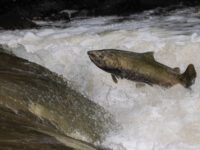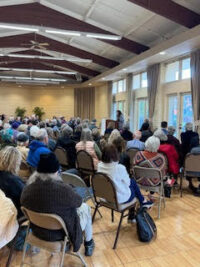On Friday, the California Department of Food and Agriculture (CDFA) announced a new approach for controlling the light brown apple moth – but the plan for Sonoma remains the same.
Two specimens were found near Sonoma earlier this year, causing CDFA to place a 15-square-mile area under quarantine. The state’s new strategy will replace the ground spray which protesters in several infested counties had forced the state to halt pending further study. Instead, California Secretary of Agriculture A.G. Kawamura said Friday the CDFA is “fast-tracking an approach known as the Sterile Insect Technique (SIT) in which large quantities of sterilized, infertile insects are released so that the wild population cannot reproduce.”
Steve Lyle of the Office of Public Affairs for the CDFA clarified on Monday that this plan does not mean the twist-ties will be discontinued.
“The program plan for Sonoma with its two discovered moths, does not include spray, but includes ongoing surveillance, quarantine, and, when the U.S. Fish and Wildlife service is satisfied the pheromone twist-ties will not cause harm to aquatic species, the application of twist-ties,” Lyle said, adding that the twist-ties are effective and also harmless to everything including the moth – which it only confuses. “We believe the twist-ties, and the pheromones emitted by the twist-ties, are safe for the environment, safe for people. But at this point it’s up to the federal government’s environmental process to thoroughly review and confirm that this is not something that will cause harm.”
The twist-tie program will not begin until the U.S. Department of Agriculture (USDA) has completed its study. He said when that was done, people would be given 30-days notice, so they can understand the program.
Not everyone believes the eradication, whether with spray, twist-ties or sterile males is necessary at all. Dave Henson, executive director of Occidental Arts and Ecology Center, said the problem is not the pest itself, it’s the way the pest has been classified. “The real story here is that in 2000, the Federal Plant Protection Act passed and once again, updated their list of pathogenic organisms. LBAM is declared by the federal government a Class A insect. There was no debate; they just chose that. The solution to LBAM is to downgrade. It’s likely not a Class A pest.”
Sonoma local Yannick Phillips, mother of four and independent advocate for agriculture, urged officials to postpone the application of twist-ties in Sonoma because she felt the CDFA had not given residents sufficient time to understand and make their own choices about the measure.
“I thought, really, this moth is not as bad as what they are talking about!” She cited a report by Daniel Harder, executive director of the Arboretum, University of Santa Cruz, who writes that in New Zealand, “…since the elimination of organophosphate treatments in 2001 and subsequent restoration of populations of beneficial insects and other organisms, LBAM is considered a minor pest that does not cause economically significant crop damage or have detrimental effect on native flora. Today, LBAM is effectively controlled almost exclusively by natural predators in both agricultural settings and wild lands in New Zealand.”
Lyle acknowledged New Zealand’s success but denied the U.S. could copy their methods. “This moth has a history of significant damage in Australia, where it’s native, and in New Zealand, where it was a pest of greatest significance for years and years. They’ve developed some natural predators, which we don’t feel we can bring into the United States because of other environmental impacts.” So unless a significant number of new moths are found in Sonoma, the plan will remain: quarantine, surveillance, and eventually, when they are finally USDA approved, twist-ties. But before they are applied, Lyle promised, there would be ample public notice and education.
Sonoma apple moth plan remains in place
More from What's HappeningMore posts in What's Happening »
- Chinook Salmon Spotted in Valley Creeks
- Lighted Tractor Parade Set for November 30 on Sonoma Plaza
- Free Thanksgiving Dinner, 3pm at the Veterans Building
- Creative Sonoma Announces #TeachTheArts Campaign to Boost Local Teaching Workforce
- The Living Legacy of Mac McQuown
- “Community Call to Action Town Hall” Draws Concerned Residents






